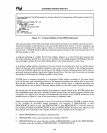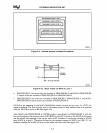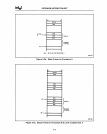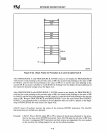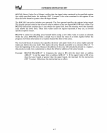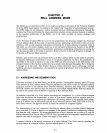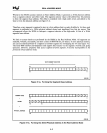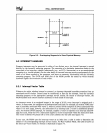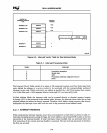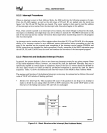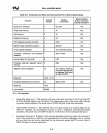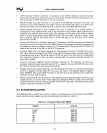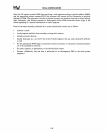
CHAPTER
5
REAL
ADDRESS
MODE
The 80286 can
be
operated in either of
two
modes according
to
the status of the Protection Enabled
bit of the
MSW status register. In contrast
to
the "modes" and "mode bits"
<if
some
processors, however,
the
80286 modes
do
not represent a radical transition between conflicting architectures. Instead, the
setting of the Protection Enabled bit simply determines whether certain advanced features, in addition
to the baseline architecture of the
80286, are
to
be
made available to system designers and
programmers.
If
the Protection Enabled (PE) bit
is
set by the programmer, the processor changes into Protected
Virtual Address Mode.
In this mode of operation, memory addressing
is
performed in terms of virtual
addresses, with on-chip mapping mechanisms performing the virtual-to-physical translation.
Only in
this mode can the system designer make use
of
the advanced architectural features
of
the
80286:
virtual memory support, system-wide protection, and built-in multitasking mechanisms are among the
new
features provided in this mode of operation. Refer
to
Part
II
of this book (Chapters 6 through
11)
for details
on
Protected Mode operation.
Initially, upon system reset, the processor starts up
in
Real Address Mode. In this mode of operation,
all memory addressing
is
performed
in
terms of real physical addresses. In effect, the architecture of
the
80286 in this mode
is
identical
to
that of the 8086 and other processors in the 8086 family. The
principal features of this baseline architecture have already been discussed throughout
Part I (Chapters
2 through
4)
of this book. This chapter discusses certain additional topics-addressing, interrupt
handling, and system initialization-that complete the system programmer's
view
of the 80286 in Real
Address Mode.
5.1
ADDRESSING AND SEGMENTATION
Like other processors in the 8086 family, the 80286 provides a one-megabyte memory space (2
20
bytes)
when operated in Real Address Mode. Physical addresses are the
20-bit values that uniquely identify
each byte location
in
this address space. Physical addresses, therefore, may range from 0 through
FFFFFH. Address bits
A20-A23 may not always be zero
in
Real Address Mode. A20-A23 should not
be
used
by
the system while the 80286
is
operating
in
Real Address Mode. I
An address
is
specified
by
a 32-bit pointer containing
two
components: (1) a I6-bit effective address
offset that determines the displacement, in bytes, of a particular location within a segment; and (2) a
I6-bit segment selector component that determines the starting address of the segment. Both compo-
nents of an address may
be
referenced explicitly
by
an
instruction (such as JMP, LES, LDS, or CALL);
more often, however, the segment selector
is
simply the contents of a segment register.
The interpretation of the first component, the effective address offset,
is
straight-forward. Segments
are
at
most 64K
(2
16
) bytes
in
length,
so
an unsigned I6-bit quantity
is
sufficient
to
address any arbitrary
byte location with a segment. The
lowest"addressed byte within a segment has an offset
of
0,
and the
highest-addressed byte has an offset of FFFFH. Data operands must
be
completely contained within a
segment and must
be
contiguous. (These rules apply in both modes.)
A segment selector
is
the second component of a logical address. This I6-bit quantity specifies the
starting address of a segment within a physical address space of 2
20
bytes.
5-1



